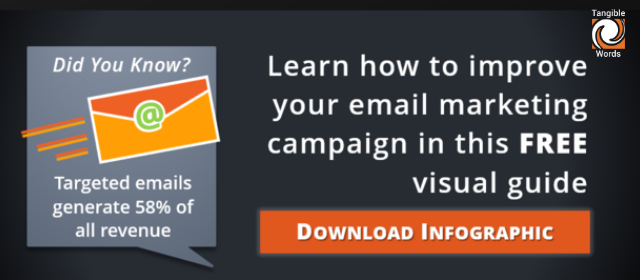SHARE
Email Marketing: How to Not Get Held Up By CASL

Everyday, we receive a handful of emails that are extremely time-consuming to go through. But the worst kind are the mass, unsolicited emails that take up your storage space. These are not only irritating but threatening. This is where Canada’s Anti-Spam Legislation (CASL) comes in.
What Is CASL?
Effective 2014, CASL protects consumers and businesses from spam and other electronic threats. It focuses on commercial electronic messages (CEM) which encourage communication activity. This tool is so important in creating a safe and secure online marketplace.
Why You Need to Follow the CASL Law
CASL helps businesses become more disciplined in managing electronic marketing programs such as email marketing. It enforces investigation and action against violators who send electronic messages without the recipient’s consent or install unsolicited programs on computers.
If you violate CASL, there are severe penalties. As a business, you could be banned from email marketing. Anyone that violates sections 6 to 9 of CASL is liable to pay an administrative monetary penalty (AMP). The amount depends on several factors including the nature of the violation, previous violations, and whether the company has benefited from it financially, as well as its ability to pay the penalty. However, serious violations can reach a penalty of up to $1 million for individuals and $10 million for businesses.
When it comes to email marketing, there are 3 things you need to be compliant in CASL:
1. Consent for Email ListsThe number one complaints the Canadian Radio-television and Telecommunications Commission (CTRC) receives is the lack of consent from companies sending out CEM such as emails, social media, voicemail and text messages . There are two types of consent required: Implied and express consent.
2. Implied Consent
- Means you have an existing business relationship with your recipient, so if they have previously inquired or purchased products or services from your company, or
- you have a non-business relationship such as if your recipient was a member of your club, a volunteer, or a donor.
Is it okay to pick up a business card and email the company? It is okay if the message relates to the recipient’s business role, functions or duties in a business capacity. So, as long as you introduce yourself and how you are relevant to the recipient in the message. But, be careful doing this.
Implied consent also applies if the recipient’s email was published online through their website. Or if it was sent to you without a statement indicating that they don’t want to receive emails at this address. Implied consent is generally valid for 2 years.
3. Express consent
- You have a clear, explicit consent from the recipient in writing or orally. For example, the customer signs up for your email newsletter on your website which clearly states that they will be receiving emails from you until they decide to revoke their consent.
When sending out an email, the company’s identification information must be included so that the recipient can easily identify you as the sender.
Company Information includes:
- Your business name
- Mailing address
- Telephone number, email address, or website URL
An unsubscribe mechanism must be present at the end of every email. The instructions should be clear, quick and simple, and at no cost for the recipient. The link to unsubscribe must remain active in the email for at least 60 days.
5 Email Marketing Tips to NOT Get Held Up by CASL:
- When it comes to sending your first cold email to your target audience, don’t ask for an appointment or meeting. Instead, ask to communicate more on what you can offer and demonstrate your business’ WIIFM.
- If the person you want to email is not on your email list but you have their contact information, ASK them for consent to be included on the email list.
- If your contact isn’t someone from your immediate network, but you’ve researched them and have a valid reason to ask for consent - make sure you’re clear with your intention. (ie. you’re a major supplier for their niche and want to connect for networking and business purposes)
- Include a Call to Action (CTA) at the end of your email to maximize the chances of receiving a response (eg. a CTA button). An unsubscribe mechanism provides recipients the option of opting out of your email marketing promotions. This will give your company a chance to remove subscribers from the email list within 10 days. A quick update will prevent you from emailing customers and violating CASL.
- People are busy, but don’t email more than 3 times. If you don’t receive a response, move on. You don’t want to spam your recipients with multiple emails.
To gain trust and respect from your leads, learn CASL compliance and follow these effective email marketing tips.
Take action to be CASL compliant and improve your Email Marketing Strategy:
References:
https://fightspam.gc.ca/eic/site/030.nsf/eng/home
https://fightspam.gc.ca/eic/site/030.nsf/eng/00013.html#s3
Topics
- Content Creation (297)
- Growth-Driven Design Websites (166)
- Inbound Marketing (139)
- Sales Growth (117)
- Tangible Words (110)
- Search Engine Optimization (85)
- Social Media Marketing (83)
- Blogging for Business (75)
- Economic Development (65)
- Hubspot (61)
- Events & Training (60)
- Company Growth Podcast (49)
- Manufacturing (47)
- Tourism (46)
- Email Marketing (41)
- Case Stories (39)
- Testimonials & Client Feedback (36)
- Education and SaaS (25)
- Google (21)
- Careers (17)
- FAQ (16)
- Inbound Marketing Agency (16)
- Alysha Dominico (13)
- Cool Companies (12)
- Associations (7)
- Food and Beverage (7)
TW Blog Sign-Up
Learn more about how to grow your business and improve your sales team process.





